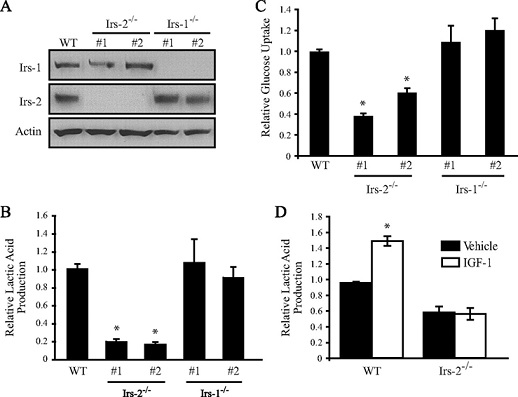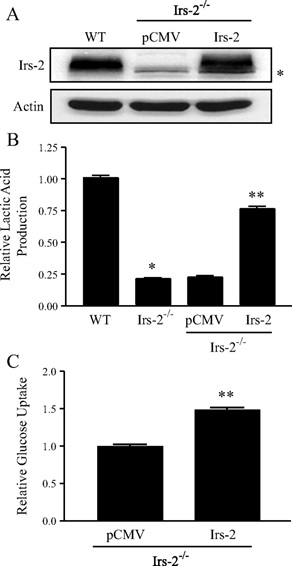Reference no: EM132927598
Q1. What does IRS stand for?
Q2. What does the abbreviation mTOR stand for and what is its function?
Q3. What is meant by the Warburg effect?
Q4. Explain why it might be advantageous for cancer cells to switch to aerobic glycolysis as their principle means of generating ATP
Q5. Give a brief explanation of the aims of the authors.
Q6. As depicted in Figure 1, why was it necessary to express lactic acid production and glucose consumption as a proportion of total protein?
Q7. In Figure 1 D what is meant by vehicle?
Q8. In your own words explain what conclusions can be drawn from Figure 1 B-D

Q9. Summarise the experimental data, including reference to the level of statistical significance, given in Fig 2

Q10. Cellular protein levels were measured using the Bradford assay. Explain the principle of this assay.
Q11. Explain how the transcription factor Fox01 is thought to be regulated by the IRS-1 signalling pathway
Q12. The authors' first hypothesis is that IRS-2 increases glycolysis via Akt signalling through Fox01. What evidence do they present that refutes this theory.
Q13. In Fig 3 what was the point of immunodetecting actin, PARP and tubulin (Fig 3 A,B and C)
Q14. Explain how the authors demonstrate that IRS-2 regulated GLUT1 surface expression but does not affect GLUT1 expression levels
Q15. How do the authors demonstrate that invasion is dependent on GLUT1 expression.
Q16. Describe using a diagram the proposed signalling pathway from IGF-1 to GLUT1 surface expression. (7 marks) and indicate where each inhibitor acts.
Q17. a) Why are protease inhibitors included in the buffer during cell solubilisation?
b) What does the abbreviation SDS-PAGE stand for
Q18. Explain in your own words what ‘stable expression' means (page 2032, line 3).
Q19. a) In your own words, describe the different possible mechanisms by which mTOR may regulate GLUT1
b) Outline the evidence the authors cite from other studies that can confirm or refute these mechanisms
Q20. What possible mechanism do the authors outline to account for the differences between IRS2 and IRS1 in activating mTOR and sustaining aerobic glycolysis in mouse mammary carcinoma cells?